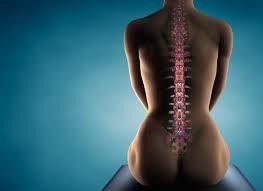
Among vertebral pains, so-called back pain is so widespread that it has rightly been described as "the most common disease of our century" affecting the active population at 60%, at least once in its lifetime.
This does not mean that in the past centuries man did not suffer from this problem but the organization of his life in the last century and the progress favored the increase in the number of back pain sufferers.
Sedentary life, modern jobs in the new professions, static and repetitive, stress, overweight, the pursuit of maximum athletic performance through hard and traumatic training are all possible causes of pathogenic back pain.
Statistical studies inform us that people who develop a spine suffer from
sedentary life as well as those who practice sports.
In sports reality, as in everyday life, the wrong ways of lifting heavy objects can easily cause repetitive injuries and an early deterioration of the anatomical components of the spine, and in particular of the intervertebral discs.
The most common discomfort is lumbago, which is pain in the waist and painful dyskinesia in the chronic phase, and in more severe cases lumbar spine in which the pain is reported not only in the lumbar region but also in the lower limb with topography which can reach up to the big toe.
For these problems physiotherapy has a number of different treatment methods, both in their nature and in their efficacy.
What we propose is the rational use of these methods according to the specificity of each patient.
There are three criteria that a physiotherapist should always consider in order to implement a back pain program with a high probability of resolving the problem.
1. The type of spinal cord patient: Depending on the particulars of each case, the physiotherapist sets specific therapeutic goals that he or she must achieve. The goals should be attainable through the treatment chosen for the particular incident. Testing for the correctness of selection will be carried out in parallel with the achievement of the therapeutic goal.
2. The variables the patient sets himself according to his lifestyle: In other words, the time the patient can devote to dealing with their problem and the number of sessions that they can perform due to occupational or family obligations .
3. Timing of the problem (acute or chronic low back pain): a physiotherapeutic treatment chosen to treat the acute phase should not necessarily be used in the chronic phase of the problem.
For example, a problem with lumbar disc herniation due to intervertebral disc herniation may be treated according to recent studies with a very high success rate if the appropriate treatment methodology is applied.
It is very important during treatment to convey to the patient how he or she should handle his / her problem daily after successful completion of the kinesiotherapy program, thus integrating it into a future prevention program. episodes. Only in this way can we prevent the conversion of a backache episode from acute to chronic.
The patient becomes autonomous in managing the problem and achieves his or her independence from the physiotherapist.
